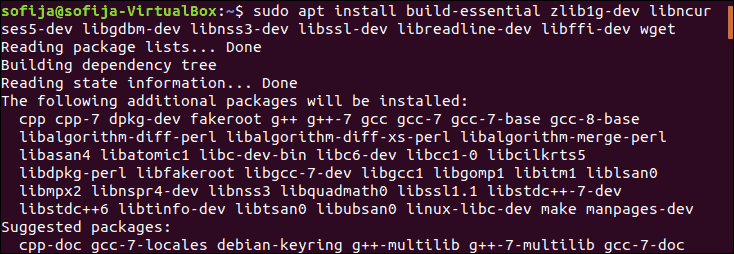

I hope this tutorial helped you install Python 3.6 on Ubuntu 16.04, Ubuntu 16.10 and Ubuntu 17.04. If Python 3.6 is correctly installed, you can use it by typing the following command: python3.6 At the moment of writing this article, it is version 3.6.
Ubuntu python 3.6 install code#
In order to install the latest Python 3.6 release for Linux/UNIX, go to their official website and download its source code to your server. Install Python 3.6 on Ubuntu 16.04, from source. You can install Python 3.6 from PPA using the commands below sudo add-apt-repository ppa:jonathonf/python-3.6 There are two methods of installing Python 3.6 on an Ubuntu 16.04 VPS, from source, and from PPA. 3. Install python 3.6 on Ubuntu 16.04 from PPA configure and sudo make altinstall commands to run. Now cd into the source directory, configure the build environment and install. You can also directly download it by clicking here or from the command line as: wget Then, download the Python 3.6 source code from. Sudo apt install libreadline-gplv2-dev libncursesw5-dev libssl-dev libsqlite3-dev tk-dev libgdbm-dev libc6-dev libbz2-dev We can do so by using the commands below: sudo apt install build-essential checkinstall Compile and install python 3.6 on Ubuntu 16.04įirst, we need to install some dependencies. If you tried the command on Ubuntu 16.04, you will probably see something like:Ģ. It does not work on Ubuntu 16.04 as the universe repository of Ubuntu 16.04 does not have python 3.6 installed.

Note: This method only works on Ubuntu 16.10 and Ubuntu 17.04. Python 3.6 is installed in the universe repository of Ubuntu 16.10 and Ubuntu 17.04, so you can install it with the commands below. If you are using Ubuntu 16.10 or Ubuntu 17.04, you can also install python 3.6 directly from repository. Installing python 3.6 on Ubuntu 16.10 and Ubuntu 17.04 from repository


 0 kommentar(er)
0 kommentar(er)
